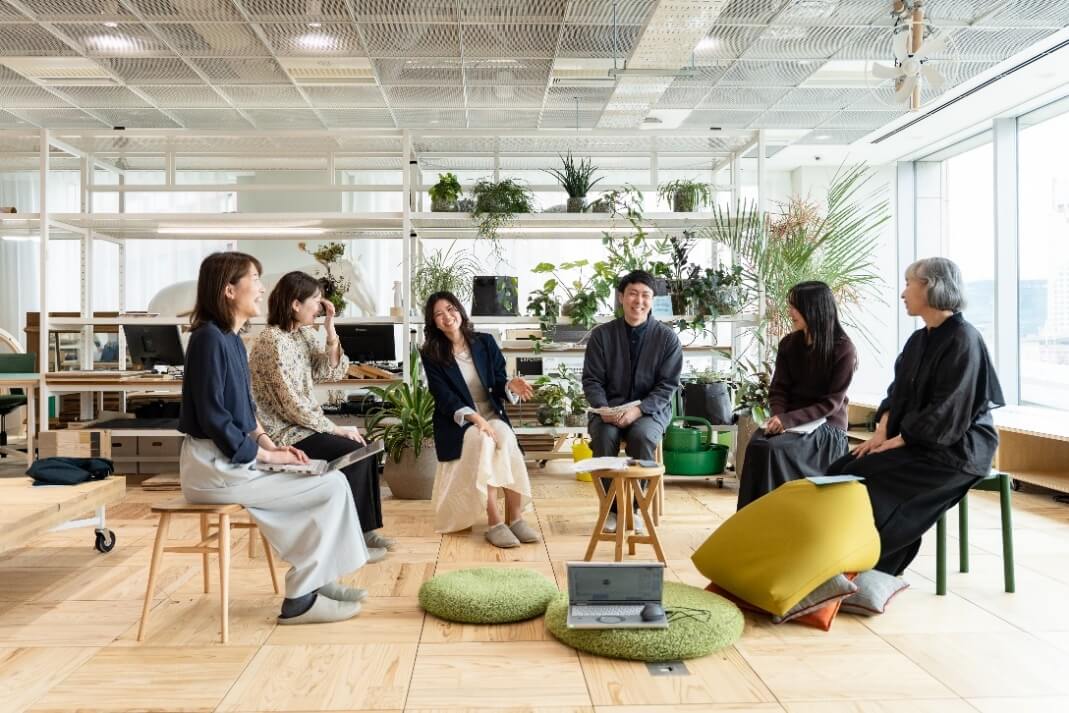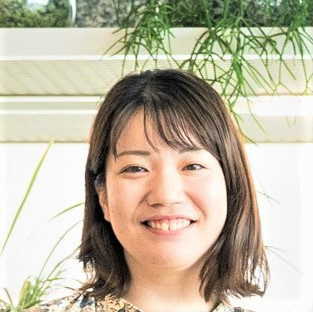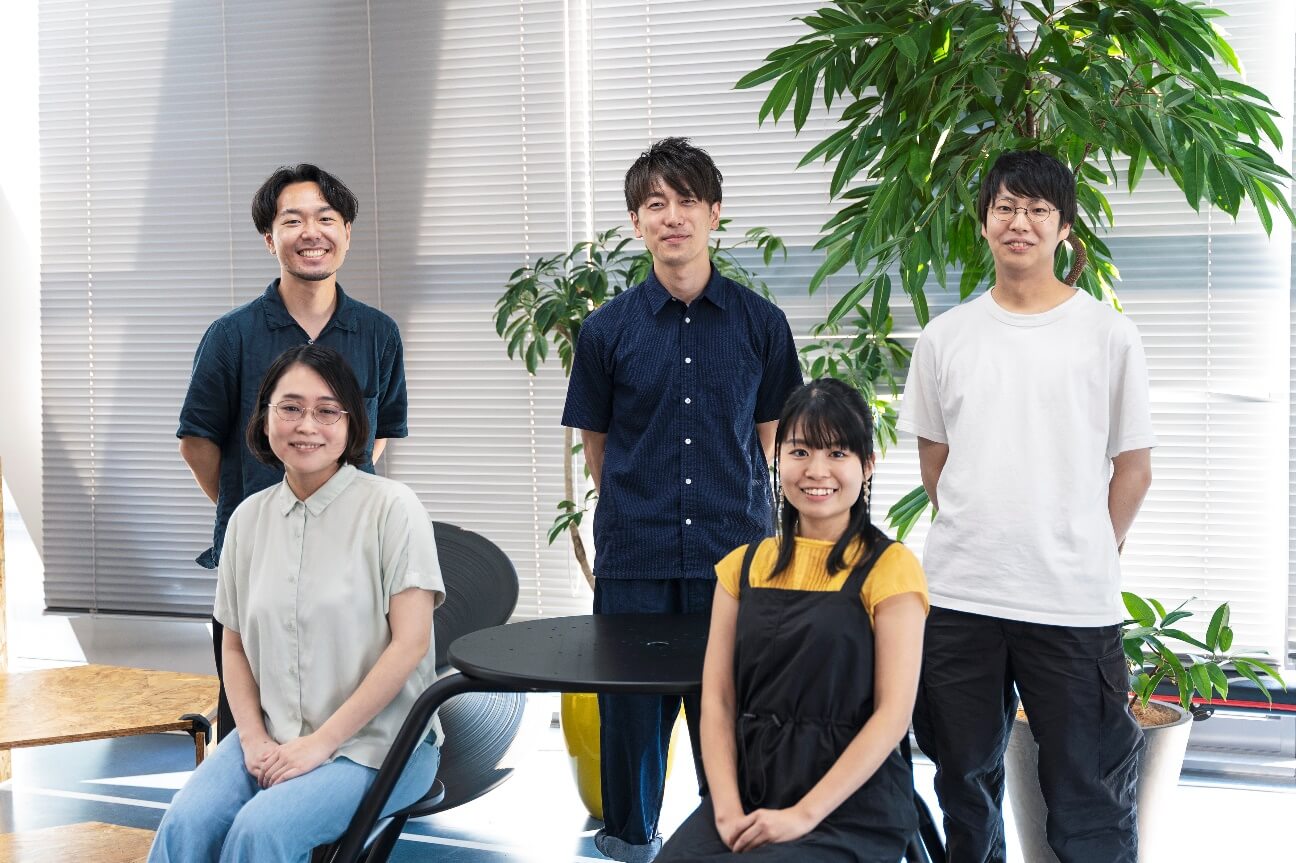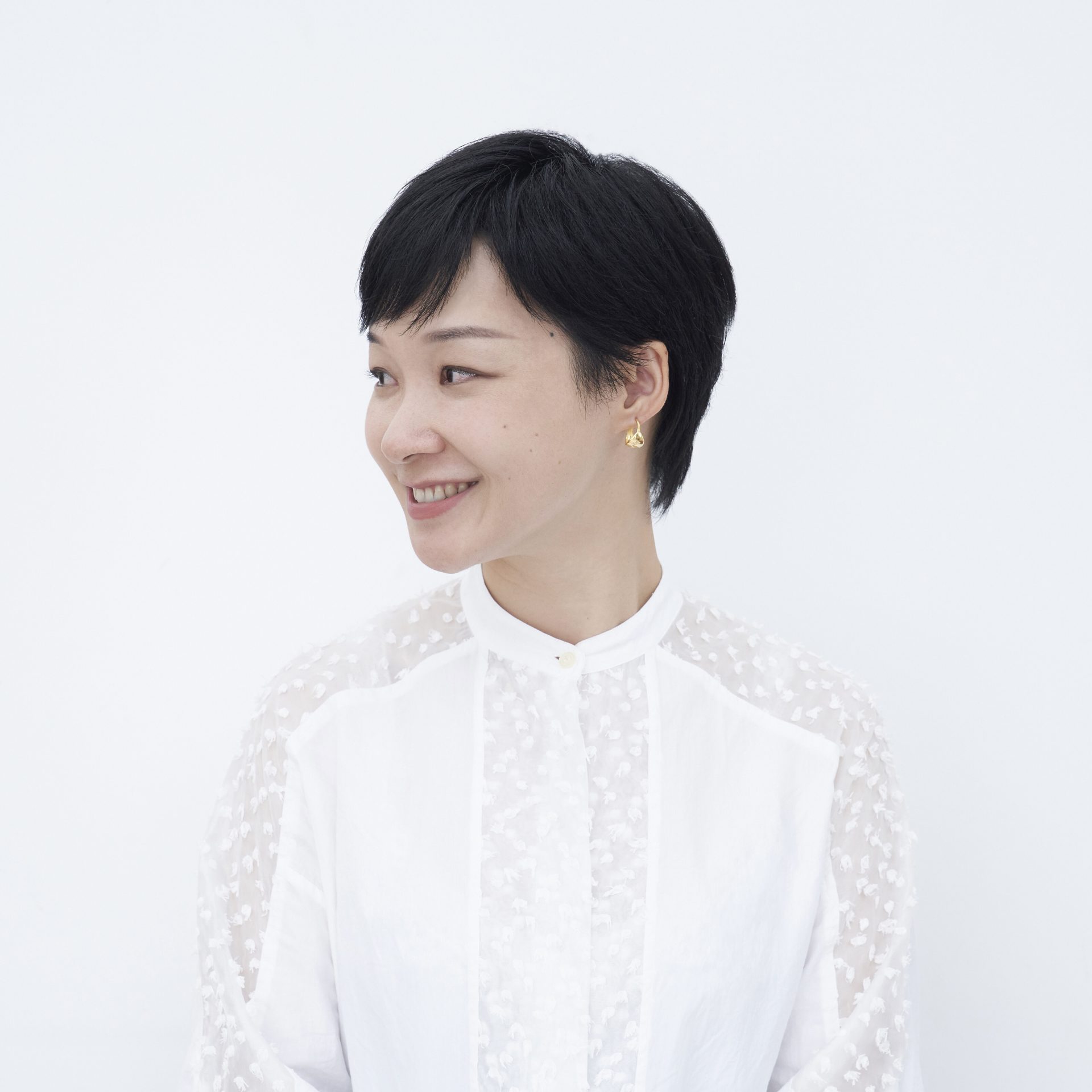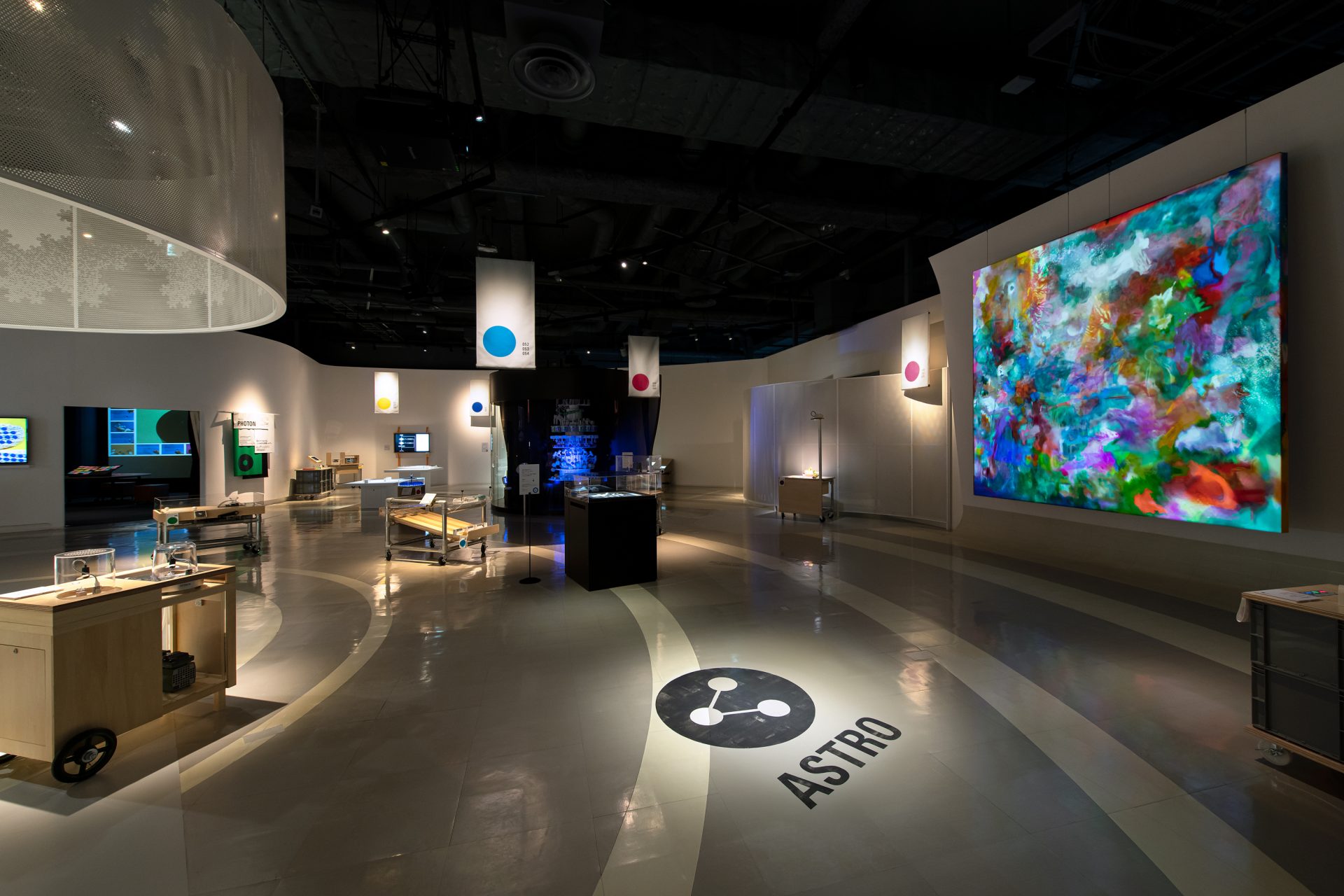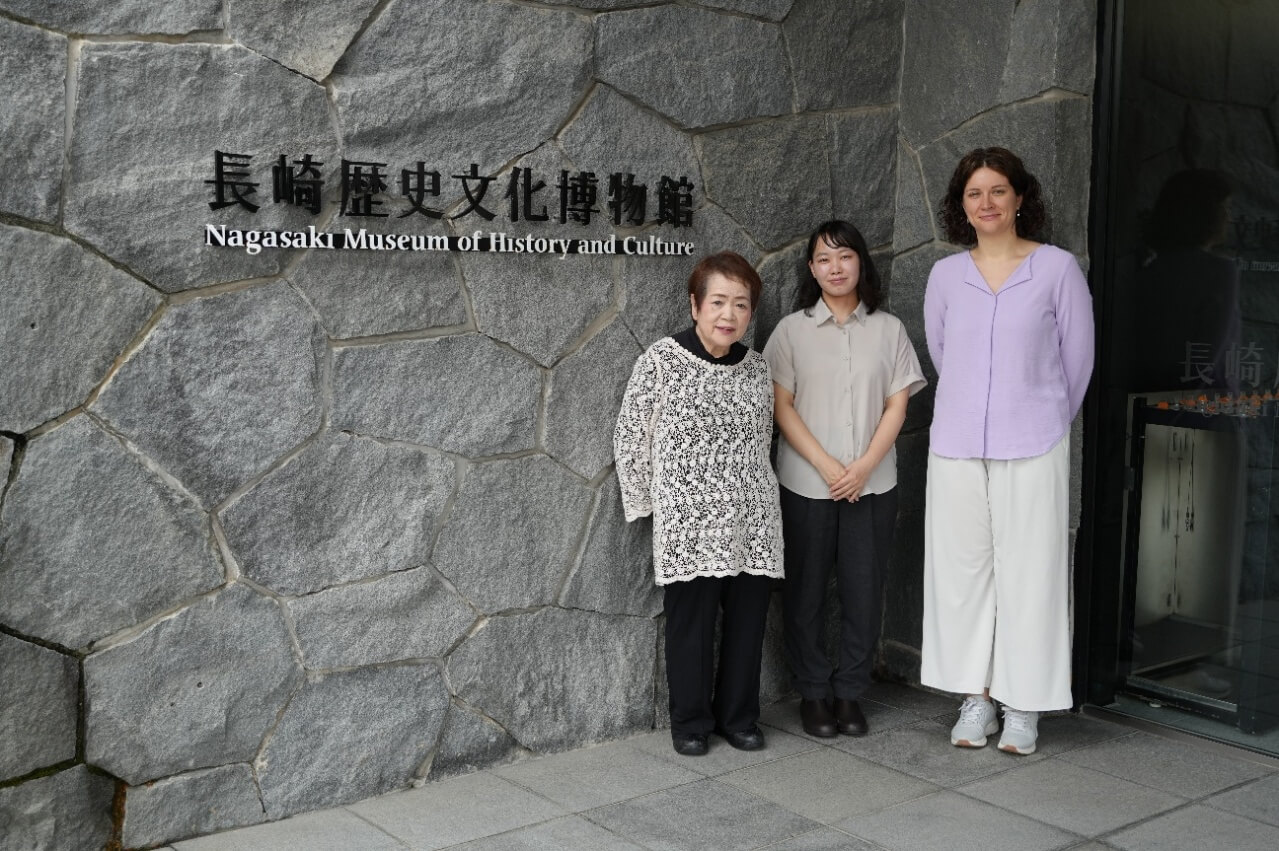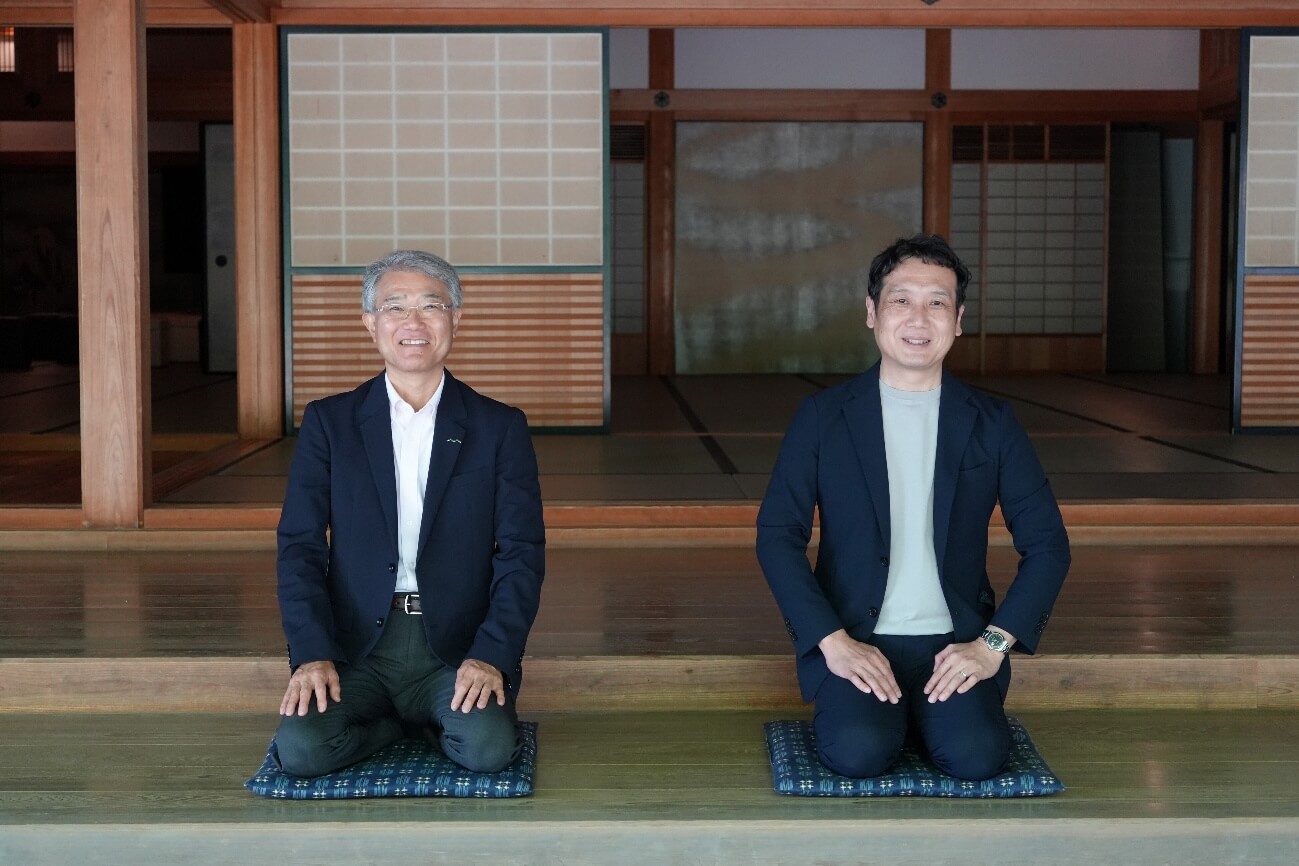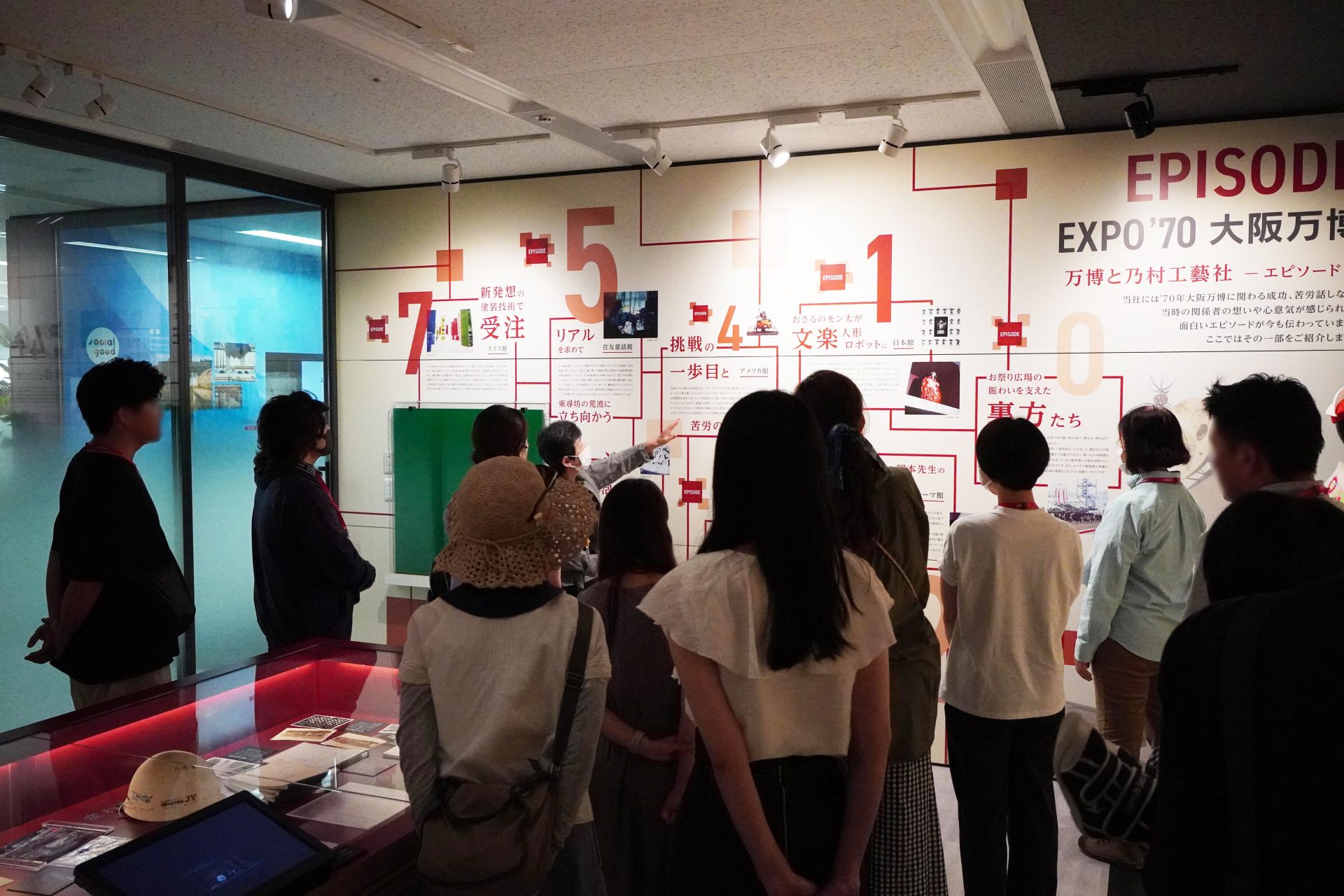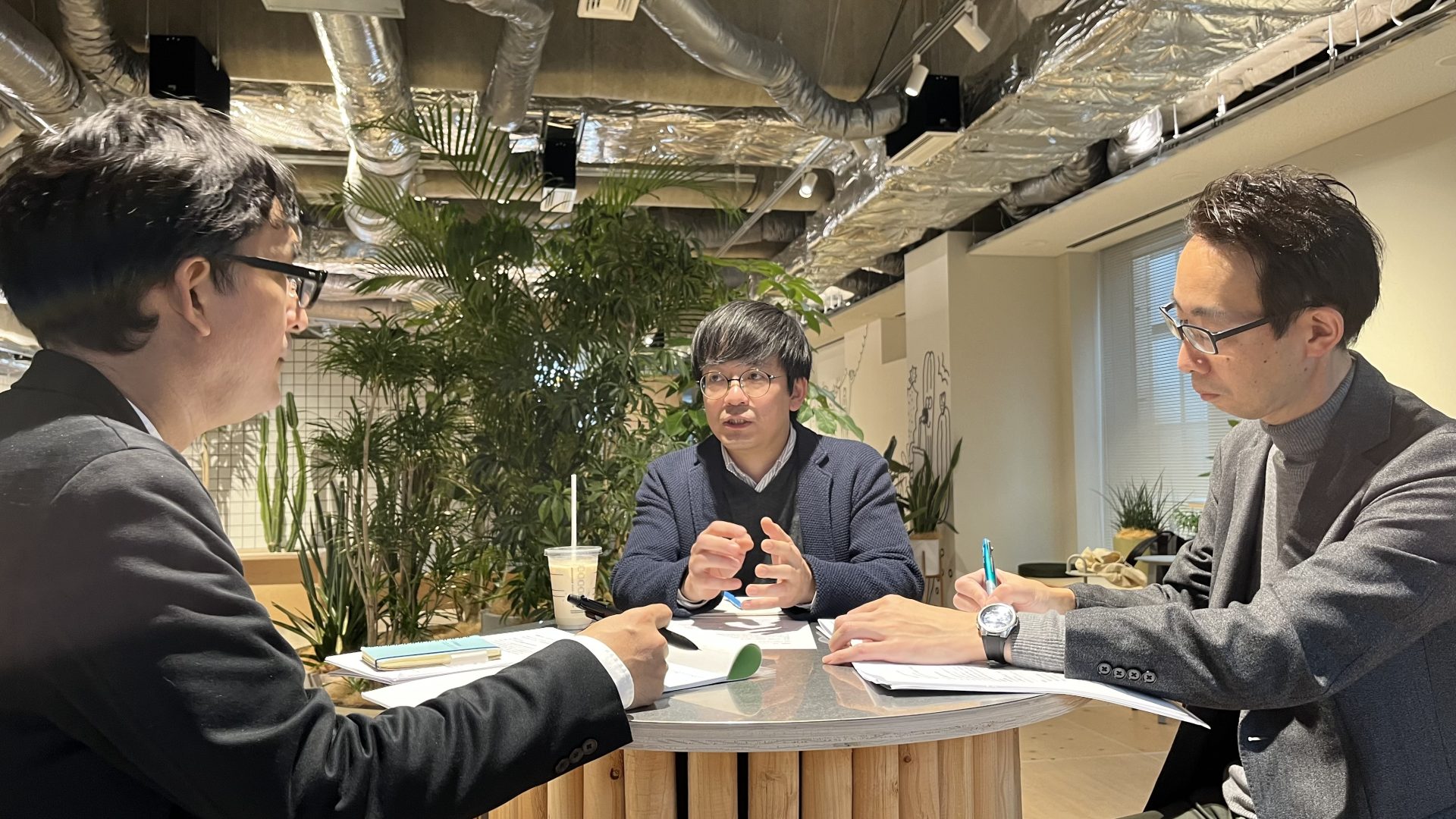- text and edit by
- Aoi Okabe
One of the biggest issues facing society today is how children spend their time after school. There are issues such as overcrowding at childcare facilities and being so busy with extracurricular activities and cram schools that they don't have time to play freely.
In December 2023, the government will announce the "Guidelines for Creating Places for Children," recommending a cycle of four perspectives - "multiply," "connect," "reflect," and "reflect" - as a concrete effort to create places for children.
NOMURA Co., Ltd. has been involved in the Kawasaki City-run "After School Place Creation Promotion Project" together with the "After School NPO After School," which aims to enrich children's after-school time. (Implementation period: July 2024 to March 2025)
The subjects of this "place-making" project were an elementary school and a children's cultural center in Kawasaki City. How did these two places change? Also, what was the process that led to the changes? This is the second part of a discussion in which project members gathered together to look back on those days and talk about their thoughts on "making a place for children."
*Click here for the first part
Non-profit organization After School NPO
We are working to realize a safe and fulfilling after-school time for elementary school students all over Japan. We operate "After School," an after-school space that utilizes school facilities, and have been involved in the opening and operation of 21 schools to date, developing a model. We also work with companies and organizations to create experience opportunities all over the country. In order to spread the know-how we have cultivated through these projects throughout Japan, we have also begun full-scale projects to enrich after-school time in collaboration with local governments.
[Interviewer]
"After School NPO After School"
Takeshi Watanabe
National Children's Place Support Team
Mariko Arai
Local Government/Business Collaboration Team Afterschool Designers
NOMURA Co., Ltd.
Business Production Headquarters, Third General Affairs Department, Public-Private Partnership Business Development Department
Tomoha Nakamura
Business Production Headquarters, Third General Affairs Department, Public-Private Partnership Business Development Department
Aoi Okabe
Creative Headquarters Future Creation Research Institute Social Design Department I&A Design Lab
Mari Matsumoto
Creative Headquarters, Second Design Center, Design Department 1, Koga Room
Yamato Suzuha
Text: Shoko Minamoto
Photo: Tomo Kawakami
What were the reactions at the preparation meetings and implementation meetings and in elementary schools?
Okabe
After completing the environmental preparations for the elementary school and the children's cultural center, we held an opening ceremony and trial operation at each location. How did the children react?
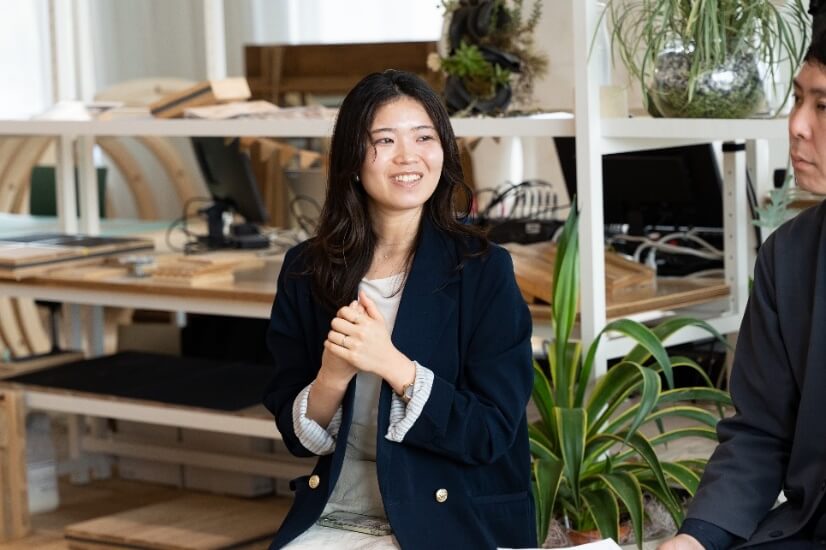
Arai:
At the elementary school, I told the children, "The designer Yamato-san and his team, who listened to everyone's opinions at the workshop, have created a space for us. Let's take a look!" and took them there. Because it is made of glass, you can see inside before you even enter. At that stage, everyone was excited, saying, "Wow! It's different!"
The uniform space of a school has been transformed into a very soft and stylish space. Seeing the children instantly grasp this, I felt that the power of spatial professionals is amazing. The children's reactions can change so much.
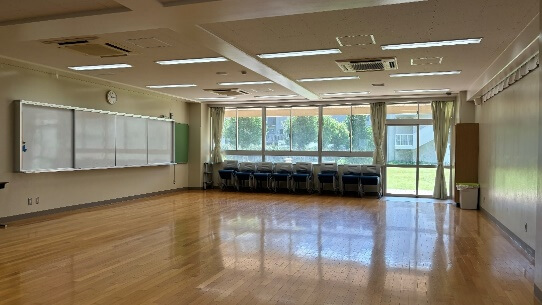 Elementary school special activities classroom (before)
Elementary school special activities classroom (before)
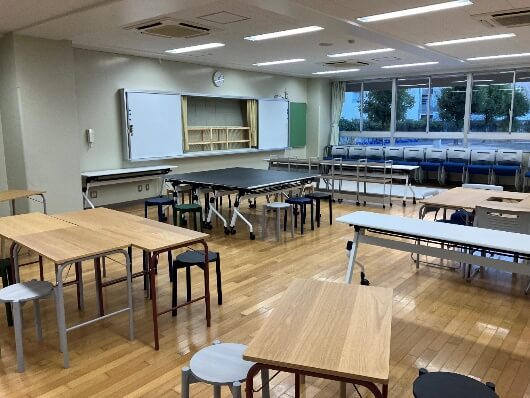 Elementary school special activities class (after)
Elementary school special activities class (after)
Okabe
Did you encounter any difficulties while running the trial?
Arai:
Rather than being a struggle, there were some points that I had to be careful about and think about. How did the children feel about the completed space? What did they think was good about it? How would they want to spend their time there? I was always conscious of the need to get them to verbalize these things. If we didn't do that properly, neither NOMURA Co., Ltd. nor I would be able to gauge whether the space that was created through the workshop was truly good for the children.
First, we had them play in the completed space. After that, we had the children do a little work to confirm "What was good? Which place was their favorite?" Using the graphic recordings and blueprints we had done up until now, we also told them to "mark the places they liked." It was very interesting to see the children move in the way that the designer Yamato had intended.
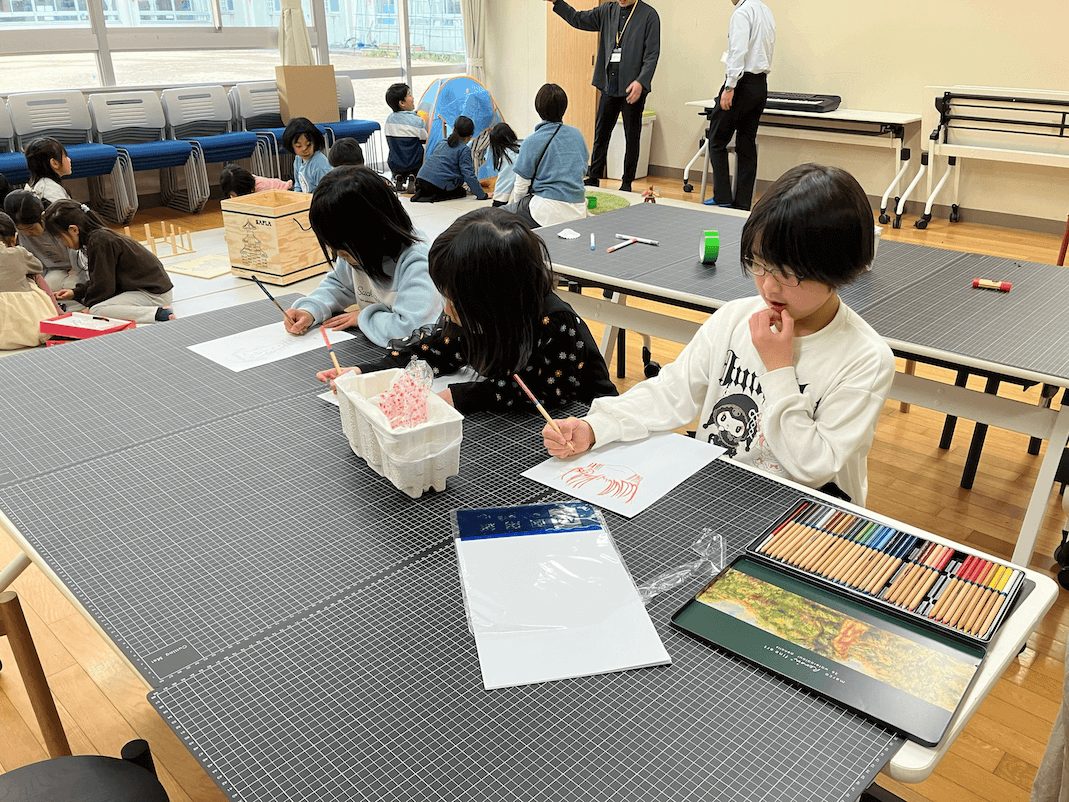
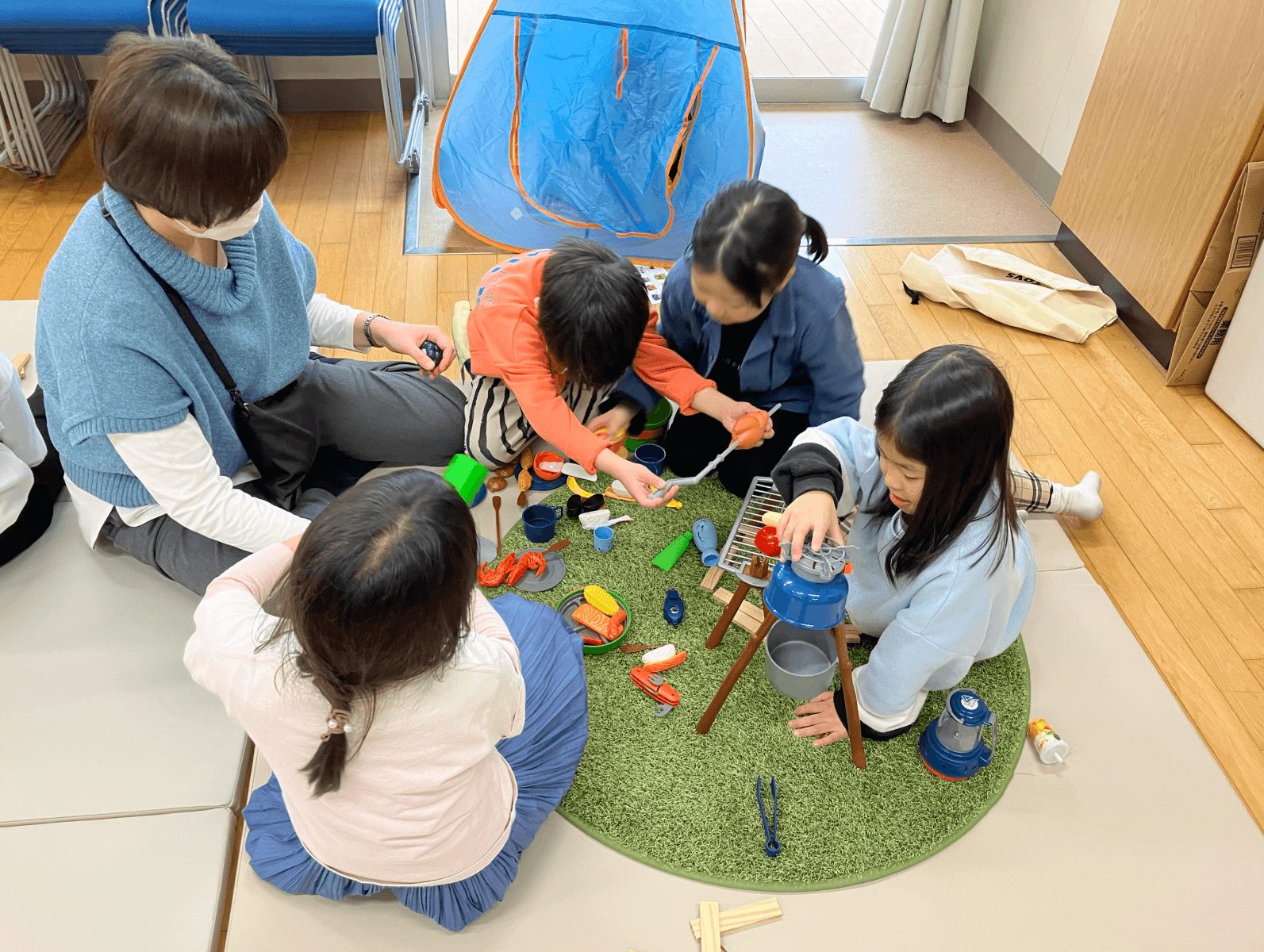
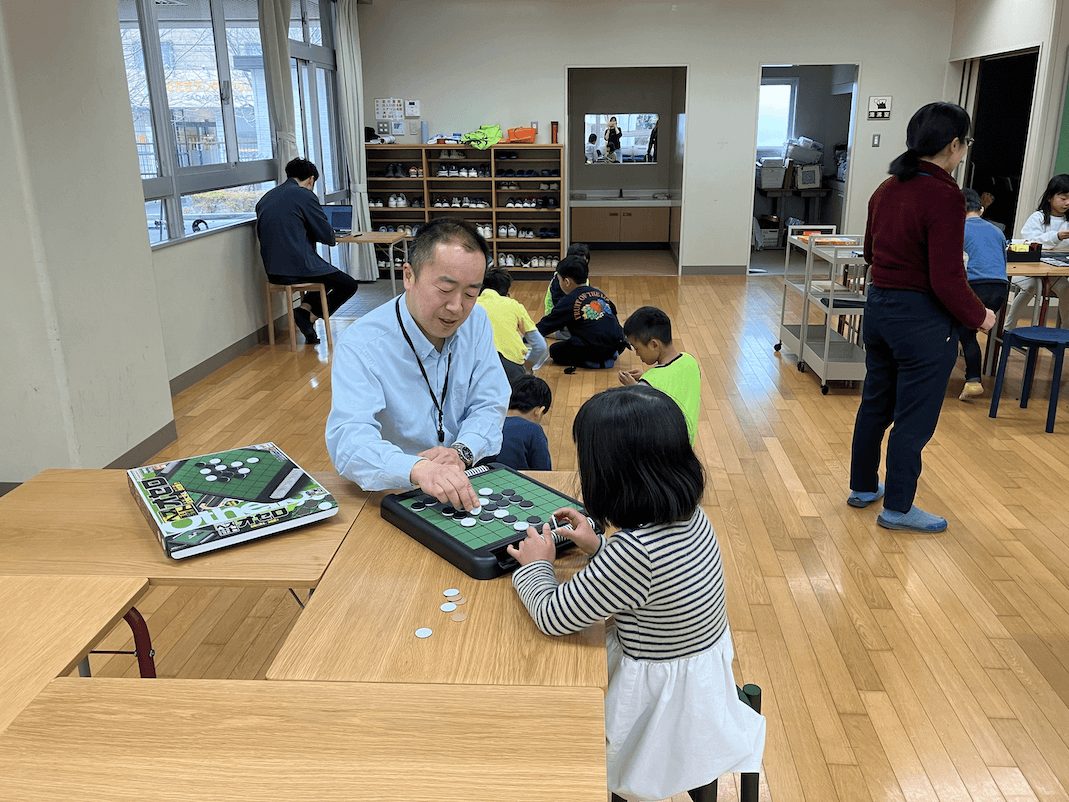
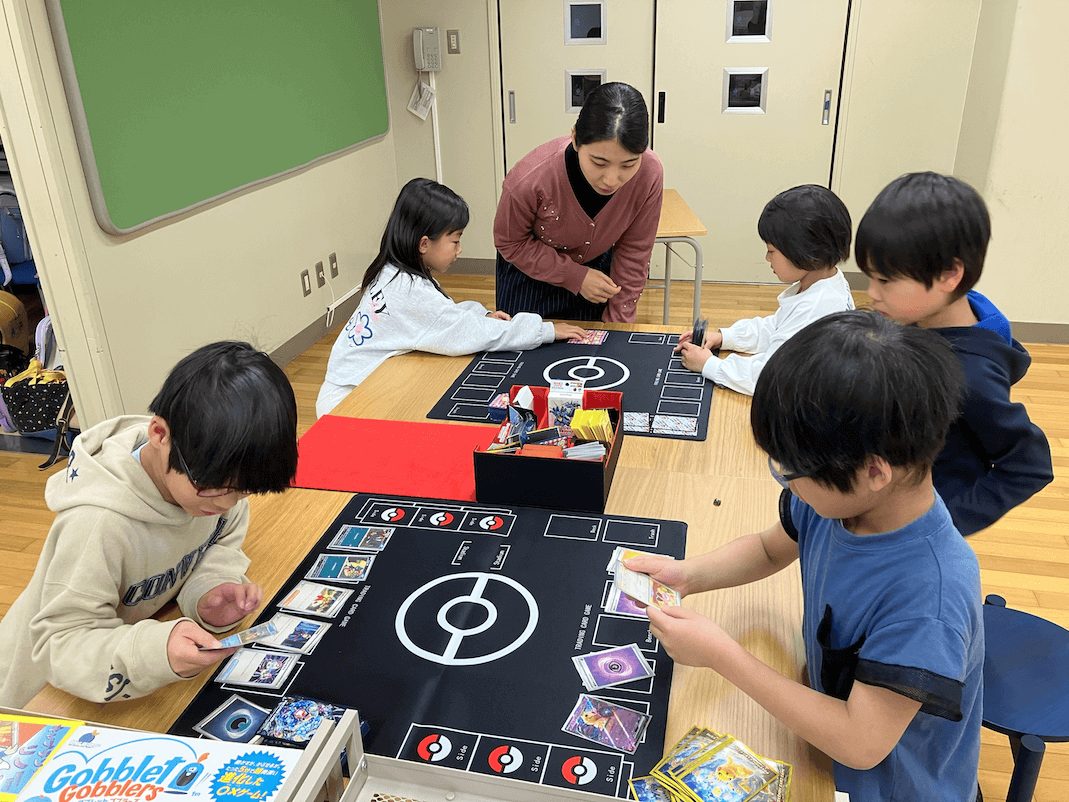
Arai:
We divided the room into about five booths, and on the day, we didn't give the children detailed explanations like "This is the room for this" or "Please use it like this". But the children quickly looked around the place, took the tools and items there, and spent their time there exactly as we had intended. We were able to realize the necessary form for creating a sustainable, non-personal place for children. To be honest, we were a little nervous about opening a place for children we were meeting for the first time.
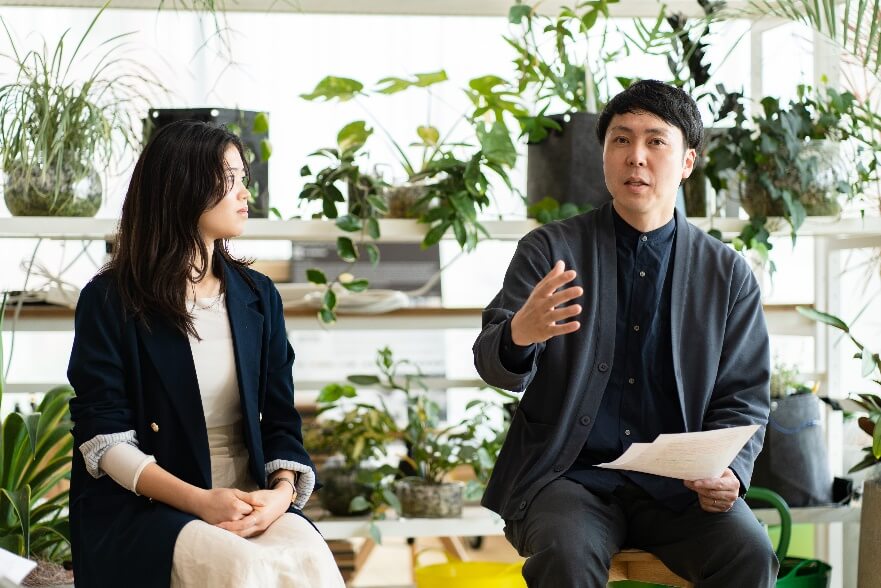
Watanabe
That was true. I thought that especially the younger students might not be able to do many things on their own, and might behave in unpredictable ways in an unfamiliar environment.
Arai:
We were very worried, but in reality the zoning had created a space where the children could move around freely without interference from one another, and they were able to naturally adjust to the zoning without adults having to call out to them.
We were worried about whether we could safely look after 30 children who we were meeting for the first time with a limited number of staff, but they were able to alleviate our concerns in terms of space and I believe they lightened our burden.
Designed with variable movement in mind
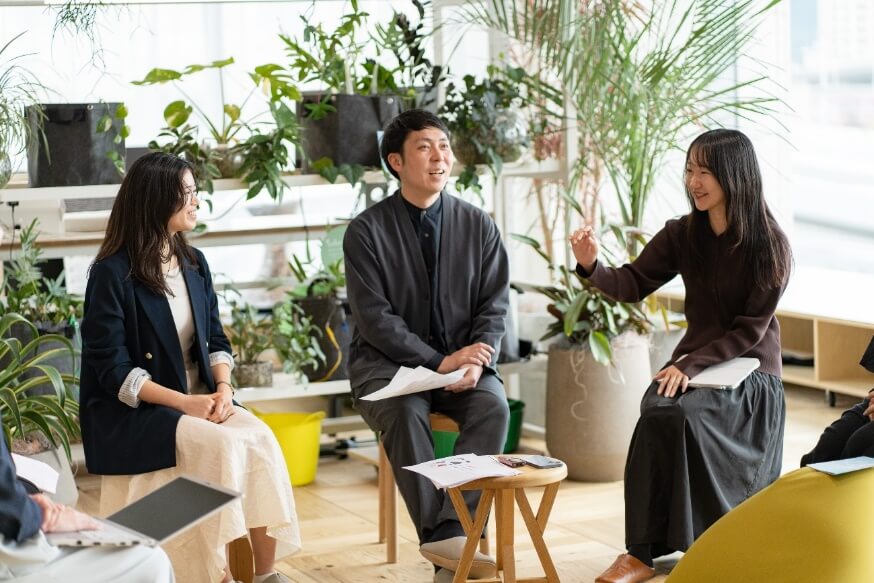
Watanabe
I was grateful for the design, which was premised on variable movement. Mats and other items were easy to move. When children were playing too close together and it looked dangerous, they could be quickly moved to create distance. The organizers were also thinking about adjusting the environment. That's what I felt when I actually ran the facility. The organizers tend to tell children to "stop doing that" or "do this." But in reality, I would like them to stop and think about it. Of course, it's important to warn or stop something when it's dangerous. But I realized that we need to learn more so that we can review the situation and adjust the environment.
Yamato
There were some things I hadn't imagined. I learned from the feedback that some children were making a lot of noise on the mats that were supposed to be used for rolling around. Some children who really wanted to roll around couldn't. I realized that the mats could be seen in both ways.
Arai:
"I want to purr" can mean a quiet purr, or a playful purr with friends. There are gradations even within the same purr. In the handbook we delivered to Kawasaki City this time, our designer Yamato has brilliantly visualized the sensory aspects of that. The design has been made understandable to anyone, and it is a treasure for us.
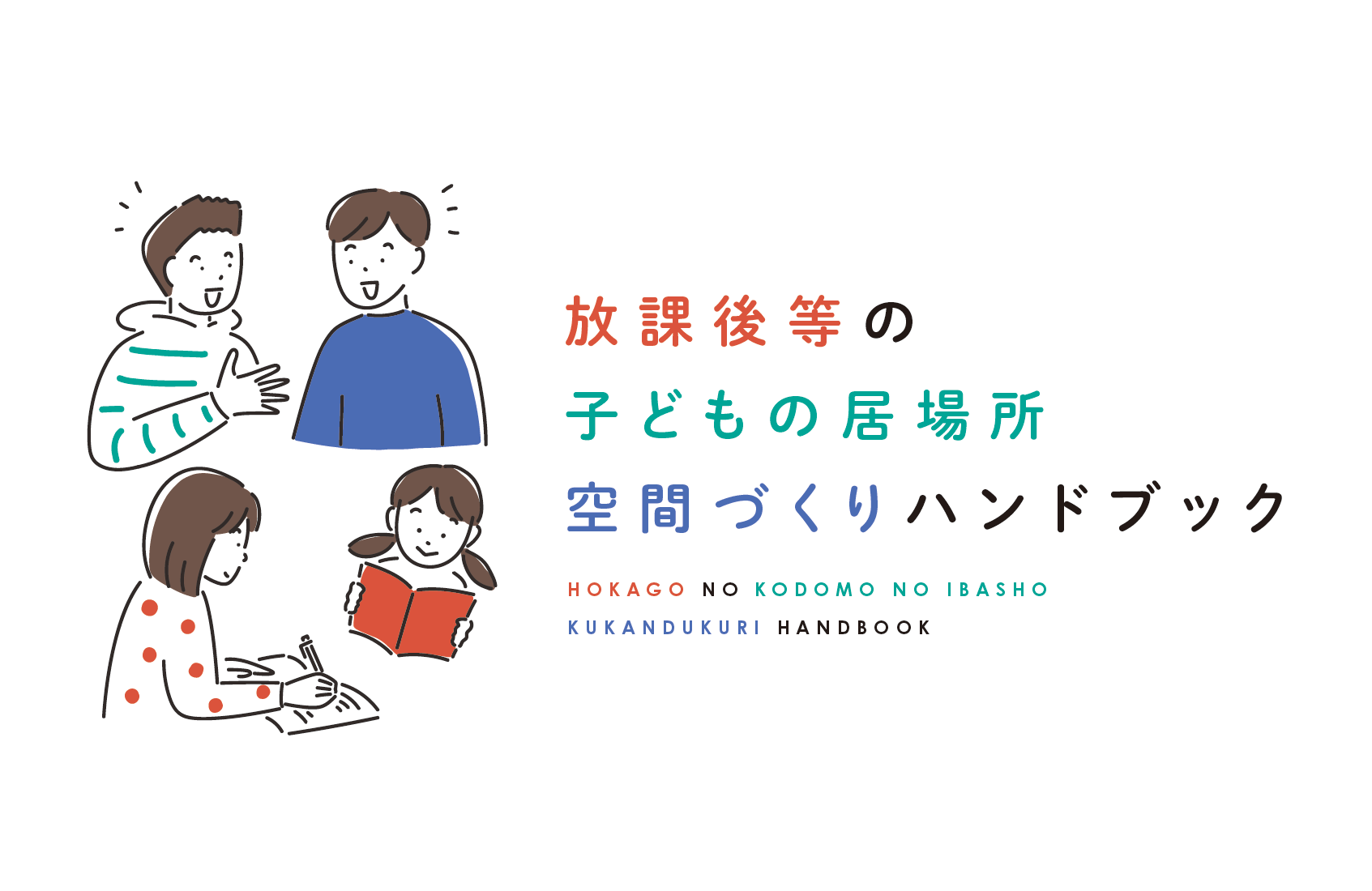
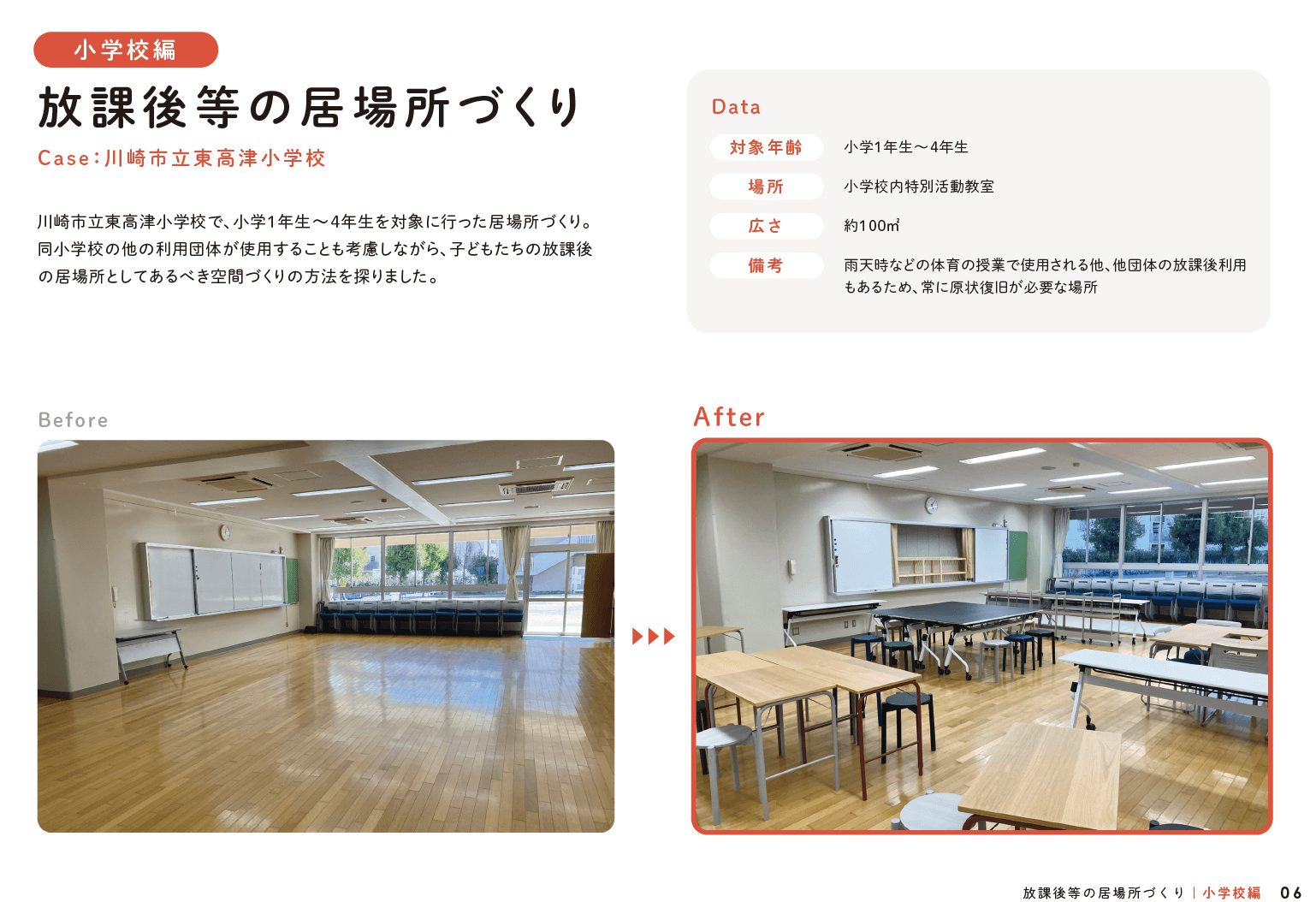
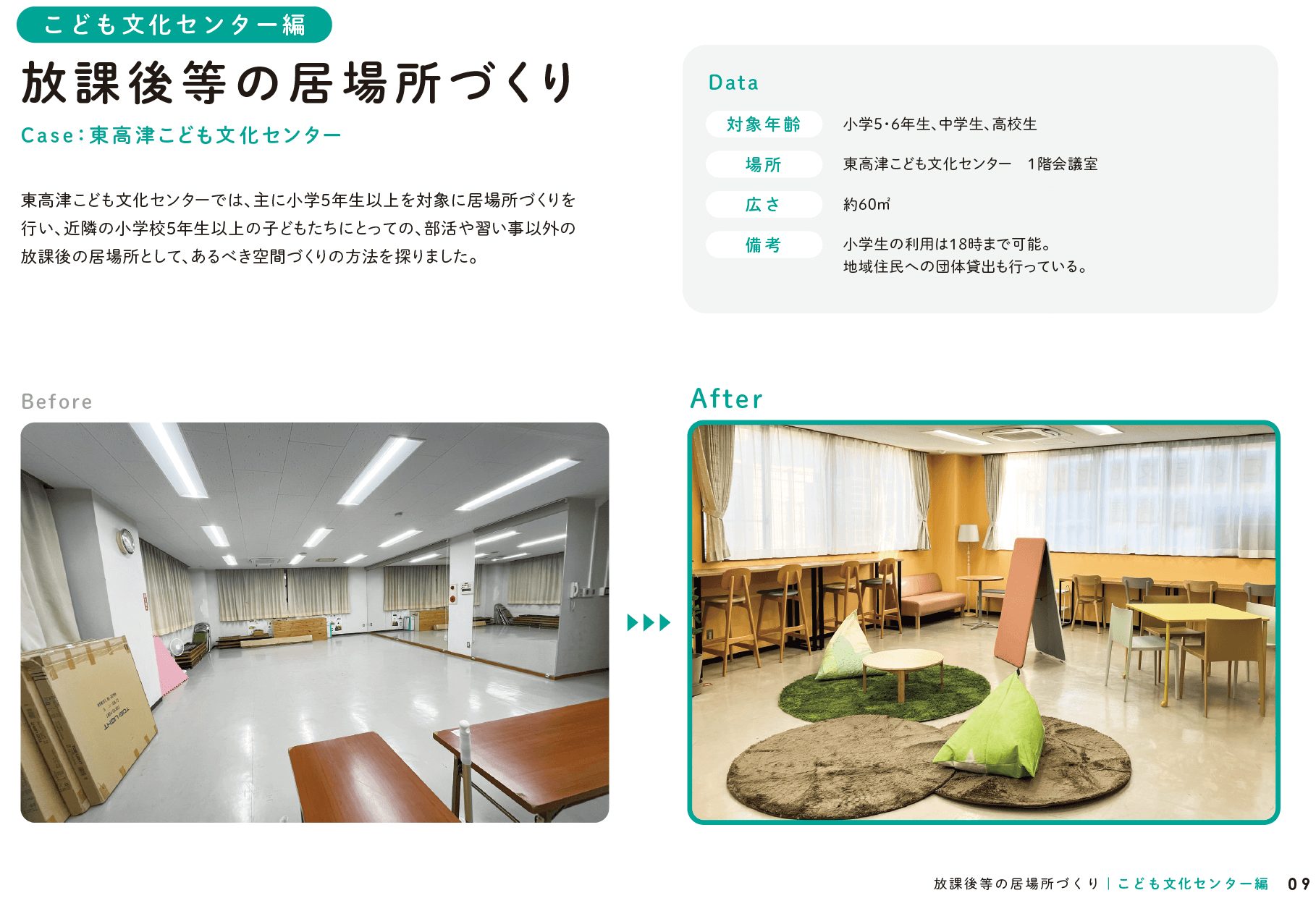
What was the reaction at the Children's Cultural Center?
Okabe
What about the Children's Cultural Center?
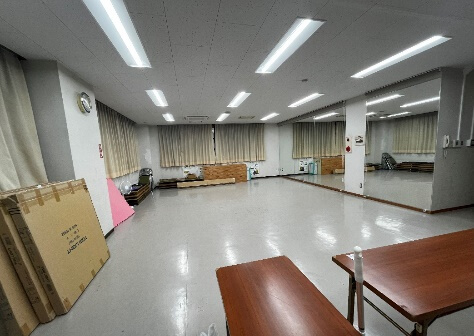 Children's Cultural Center (before)
Children's Cultural Center (before)
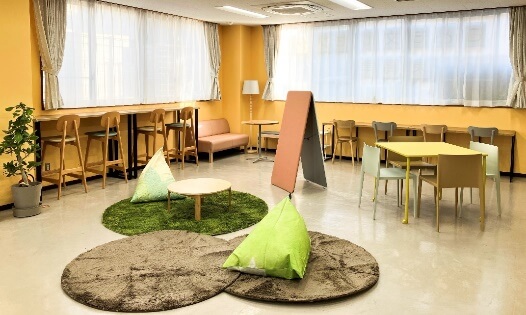 Children's Cultural Center (after)
Children's Cultural Center (after)
Arai:
There were children from various schools and areas gathered. The ages ranged from 5th grade to high school students, and it was probably a space where most of the children were strangers.
Some children were in the midst of puberty and were too embarrassed to come in. Even when we called them in, they just sat there and looked around. Even those children would come in after a few days and bring their friends.
Okabe
So it has become a more comfortable place.
Arai:
Children who don't know each other start talking to each other and make more friends. I think it was good to be able to see that process. It was also wonderful that just having furniture of different heights or different types in the space makes each person's space their own. You don't have to divide it up or create separate rooms; just changing the color of the furniture or carpet makes it feel like your own personal space. When the children can see that for themselves, they feel reassured. It was a learning experience.
Watanabe
The common issue shared by the elementary school and the children's cultural center is how to make collectivity and individuality coexist in one place. There is no need to force a certain shape or separate them, but it is very important to continue to listen to both voices. For example, let's say there is something like a calm down space. There are children who want to spend time quietly there, and children who think it's like a secret base when they go there with their friends and get excited. How can we accept both without rejecting them and make it work? That is something that the administrators should be able to determine. How to deal with both persistently without making it a rule to make it work and dividing things up is a future issue.
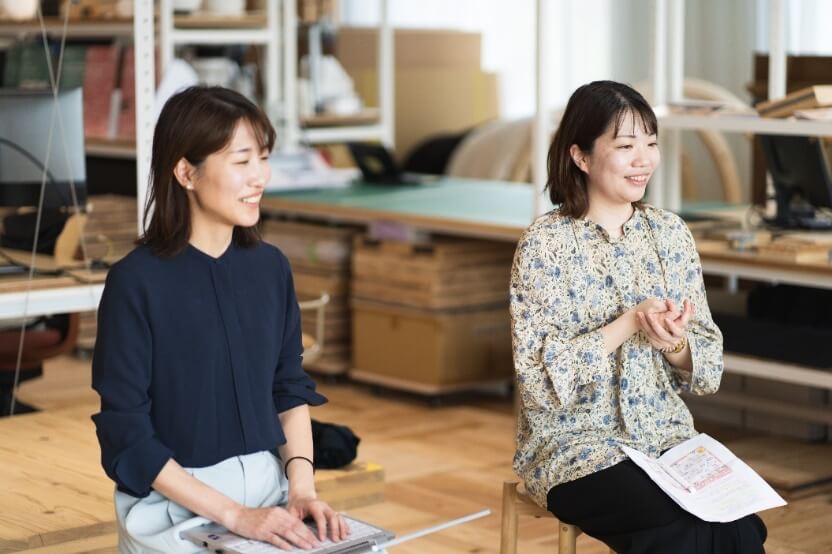
Okabe
Have you received any feedback from facility staff?
Arai:
The director of the Children's Cultural Center said to me, "Of course I'm happy that the children who used to come here were happy. More than anything, I'm happy that children who wanted to come here but couldn't for one reason or another are now able to come because of the new space, and I'm also happy that it has reached children who have been dropping out of school and who think, 'I really want to get outside, I want to connect with people, I want a place to belong.'"
Matsumoto
This is very pleasing to hear for us.
Watanabe
The cooperation from the school was also smooth, but that was only possible thanks to NOMURA Co., Ltd. 's proposal capabilities. Yamato-san created materials that were not simply blueprints, but were easy to read and clearly communicated the intention. The principal and the school's administrative staff were excited as they looked at the materials, saying, "Wow, it's amazing how wonderful it can be." I think that it was because of those materials that the people at the school were able to move forward in a positive manner.
Nakamura
We were very grateful to be able to work with understanding school officials. NOMURA Co., Ltd. is accustomed to receiving orders for permanent installations. However, at first we were a little confused about creating a space that can be used differently depending on the time of day, such as this time, where it can be used from a certain time until a certain time, and then completely removed. However, a school is a place used by many people, so we need to make it an easy-to-use space. What should we do to achieve this? We learned that we needed a design that could be variably moved and not interfere with other times of the day, which was a great learning experience.
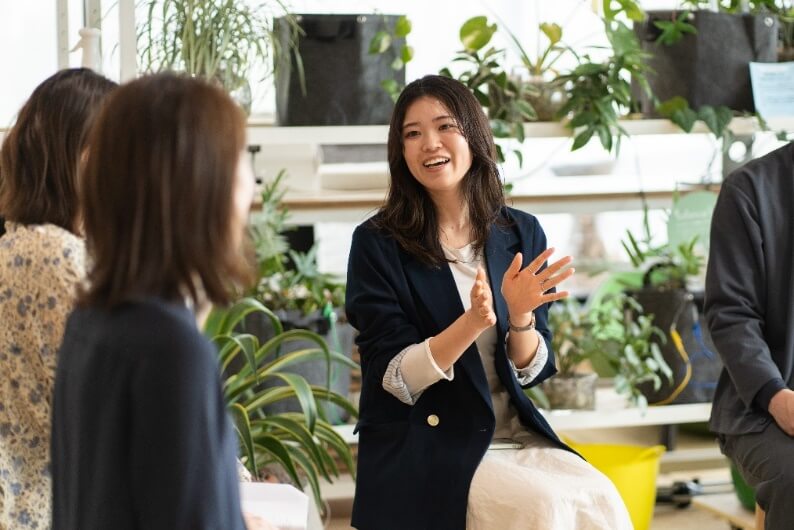
Arai:
Both of the spaces that NOMURA Co., Ltd. created were easy to tidy up.
They had the product designed with attention to detail, such as whether it would fit in place and whether it would stick out. I could see this when I actually used it.
The Importance of "Space and Environment"
Okabe
Finally, please tell us what you would like to work on in the future.
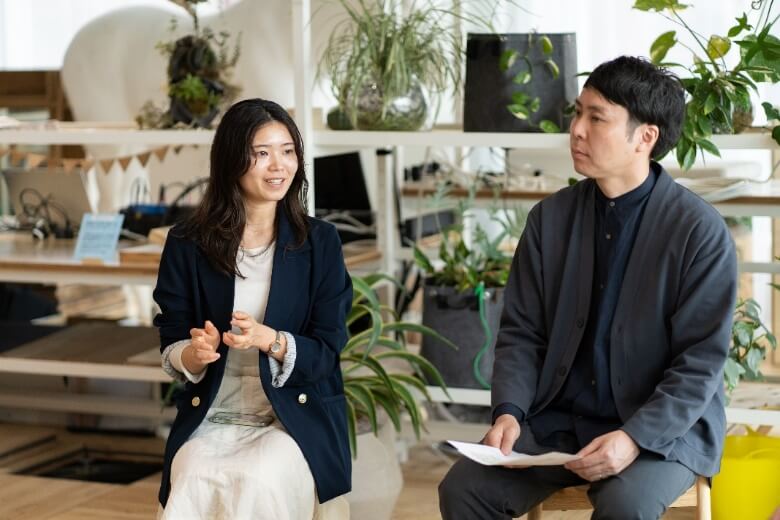
Watanabe
Utilizing after-school care facilities, local public facilities, and school classrooms. Creating a place using surplus space. When proceeding, we tend to focus on "people". Of course, manpower is necessary. However, in study sessions and meetings with the people we work with, including us, the topic of "space and environmental elements" has not come up much. We learned a lot from the experience and demonstration we were able to demonstrate this time, and we would like to spread this experience nationwide. We would like to share this widely so that people who think about after-school activities will also pay attention to "space and environment". I realized this time that knowing the importance of "space and environment" allows us to have a different perspective when we get stuck in supporting children.
Arai:
When there is no one on-site who is good at watching over children, in order to maintain a safe and secure environment, the response can become a little more conservative than what the children want to do. Children who used to enjoy coming to the facility suddenly stop coming... A personal approach cannot provide a good place for children, and it is not sustainable. I also tried to create a place from the space and environment by imitating others, but I am not an expert... In the midst of all this, I was able to participate in this project, and I learned a lot. I think there are people in after-school settings all over the country who are struggling with the same issues. That is why I want to spread the importance of "space and environment" in the future.
A child's peace of mind after school leads to peace of mind for parents
Okabe
From a creative perspective, is there anything you would like to do to improve children's spaces?

Matsumoto
I always have a sense of challenge in asking myself, "Does the space created by designers reach those who really need it?" If we are to create a place for children to go after school, we want to create and deliver a space that everyone can feel safe in, that "I can't go to school, but I can go to that place," a space that gives them a sense of security like a mental safety net. If there are more places like this one where you can choose your own place and where there is a sense of security and acceptance, I hope that it will become a place of contact with society for children who "can't go to school, but can go to an after-school place." After school is an important time for children. That's why we want to continue the challenge of creating a comfortable place. Of course, I think that this is possible only because we are working with people on the management side, such as After School NPO.
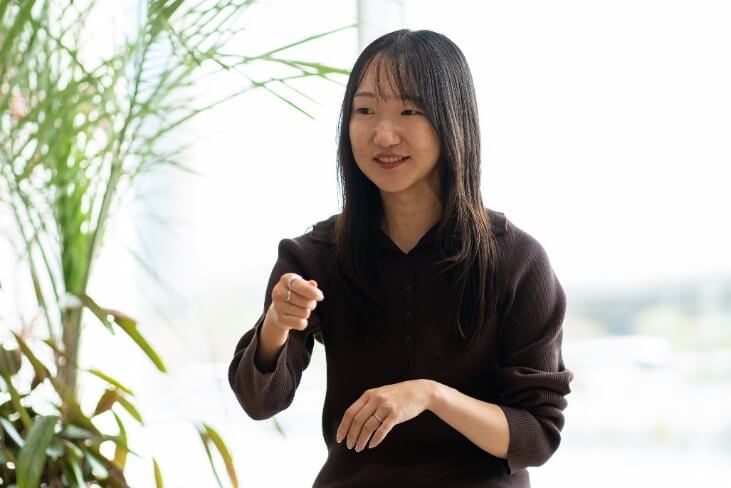
Yamato
I am grateful to have been able to learn a lot from the organizers, who listen carefully to the people involved and talk carefully to the children. This time, we were aiming to create a design that could be adapted to after-school activities anywhere in the country, but there may be many subtle differences depending on the region and the times. Without becoming complacent, I would like to continue to listen carefully to the voices of the children living in the area and always design with a fresh attitude.
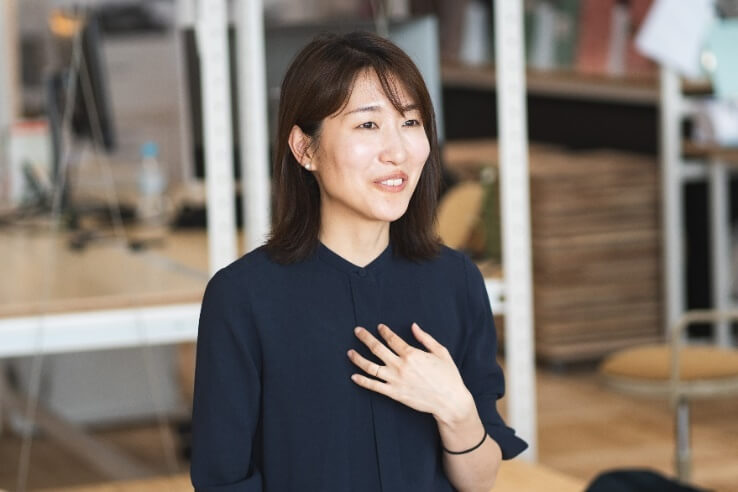
Nakamura
The time spent in class and the time spent after school. If you compare them, elementary school students are almost equal. There is a lot of focus on how comfortable it is during class, but it seems that the comfort of spending time after school has not been given much attention. When it comes to places where children spend time after school, there is a tendency to make them easy for adults to manage. It is still difficult to realize what children want to do and how comfortable it is. This time, we were able to hear a lot of voices from the children who actually use the space, and we were able to listen carefully to the opinions of the management side and continue designing. We believe that this process should be incorporated into our design flow in the future.
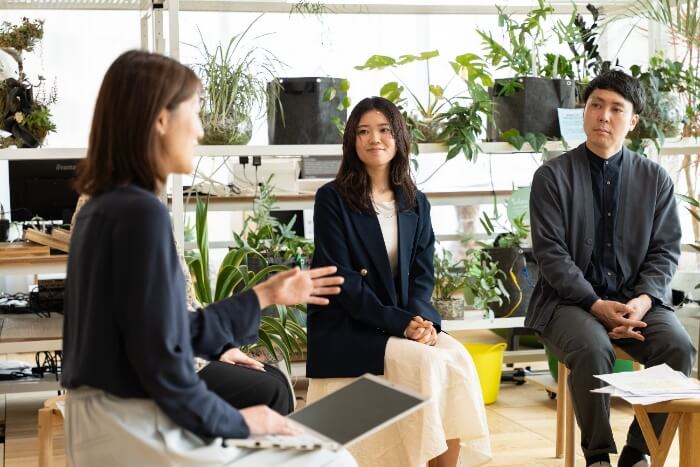
Matsumoto
Ensuring that children can spend their after-school time in safety leads to peace of mind for parents too.
Arai:
Really. Creating a place for children to belong will ultimately benefit adults. That's what I think.
Okabe
NOMURA Co., Ltd. also wants to focus more on "creating a place for children" from now on. Thank you all for today.
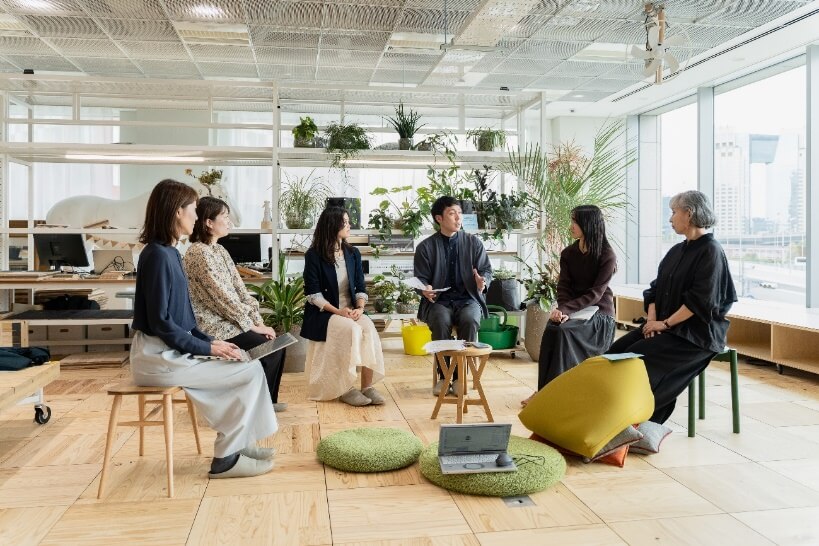
Like this article?
